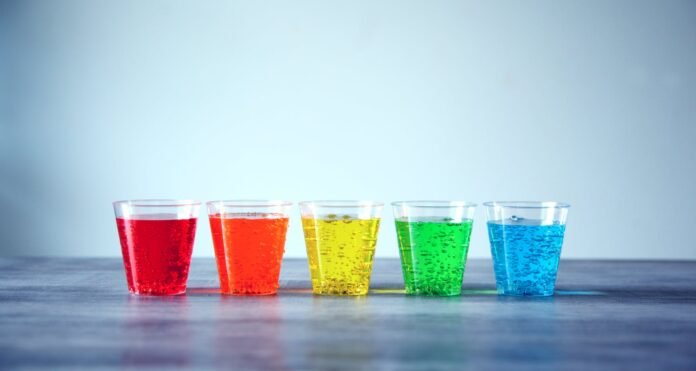If you are looking for a way to consume enormous amounts of vitamins, minerals, antioxidants, and enzymes, in order to enhance your immune system, boost your energy, and become overall more healthy, then juicing is for you. Here, we offer you tips and techniques that will help you to get the most out of your juicing experience.
Reuse the pulp from your vegetable juices to cut down on waste. You can use vegetable pulp as a base for soups and stews, to add flavor and texture. In addition, the pulp can be used as the base for a compost, which you can then use in your garden to grow even more fresh vegetables.
When attempting a juice-only diet, it can be helpful to remove all processed foods from your house first. Having a box of crackers, a jar of peanut butter, or some candy bars staring you in the face while you can only have juice is an easy way to cut your diet tragically short.
If you want your juice to be very smooth and free of pulp, try using a coffee filter or cheese cloth to strain it after it comes out of the juicer. Also keep in mind that the softer the produce used, the thicker the juice tends to be for example, tomato juice.
It’s best to remove the stems and leaves from fruit and vegetables before you juice them. Some items, like beat tops, can be left in if you so desire. Do some research to find out which leaves are edible, or worth eating nutrition-wise, and which to throw away. Stems could cause damage to your machine, so throw them away regardless of nutritional value.
Find a juicing community online and sign up to learn more about what others have tried. They’ll have tons of recipe ideas, warnings about things they tried and failed, and support for you when you’re feeling overwhelmed. They will also have money-saving tips and tricks that you might not have thought of before!
If you need a quick breakfast, give juicing a try. Fresh juices provide vitamins, minerals, and enzymes lacking from most quickly prepared meals. Using a powerful juicer, you can make fresh juice as quickly as a piece of toast. The high-end models even let you toss in whole pieces of fruit. There is no excuse for skipping breakfast anymore.
When figuring out your recipes and buying produce at the market, remember that approximately one pound of vegetables and fruit will lead to one cup of juice. Softer fruits will yield about as much juice as is equal to their weight as they won’t lose much pulp, while harder vegetables will produce a lot of pulp and produce less juice.
Notice the signs that body gives off after drinking certain fruit and vegetable juices. Some fruit juices will not work with your system. Look at the recipe of any drink that upsets your stomach, and try to figure out which ingredient is the problem. You can start to use that ingredient in smaller doses, acclimatizing your body to it’s effects.
When it comes to juicing, one thing that you want to keep in mind is that the best way to keep your juice from changing color is to add lemon juice to it. This is important because often times fresh juice can take on a distasteful color that may prevent you or others from drinking it.
Incorporate spices into your juicing. There are a variety of spices such as cinnamon, nutmeg, garlic, ginger and others, that can can boost the flavor output of your juices. If you have flavors you want to experiment with, look for recipes online or you can look for spices that work well with fruits or vegetables. Be sure to check their health and nutrition values.
When it comes to juicing, one thing to remember is the only way for the body to process wheat grass is by juicing it. This is important, because you are creating a way to introduce important ingredients into your body that you could not have done otherwise.
When you are making your own juice, the best vegetables to use are organic vegetables. By using organic vegetables, you are maximizing the benefits of juicing. When non-organic vegetables are used, you are adding unhealthy pesticides and chemicals into an otherwise healthy drink, which depletes the benefits of creating your own juice.
If you don’t like having pulp in your juice, cover the container it’s dripping into with cheesecloth. DON’T throw the pulp away, though, as it contains a lot of fiber and nutrients that you need. Mix it with non-fat, unsweetened yogurt for an excellent breakfast item or after-meal dessert treat!
In regards to juicing, it is important to consider the fact that you are creating a natural and cheap anti-aging product. This is important to consider when you weigh the costs of a juicer and produce, against how much you may pay for other methods of staying young, such as creams or medicines.
If you want to embark on a juice fast, keep the following tips in mind to ensure you do it safely. Drink at least 32 to 64 ounces of juice a day to keep your energy levels up so you won’t feel sluggish. Drink water in between juices, and dilute the juice by two-thirds at “meal” times. ONLY use organic produce while fasting so you can include the skin.
Juicing has many benefits and will make you much, much healthier. With our tips and techniques, you can get major benefits from your juicing experience, with minor setbacks. Juicing is fast and easy, and the investment is well worth it. What are you waiting for? Put our tips to the test.

